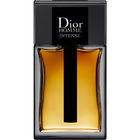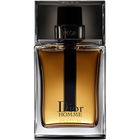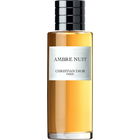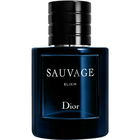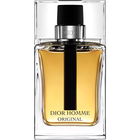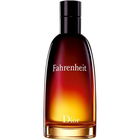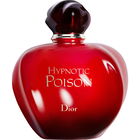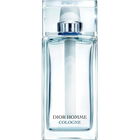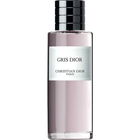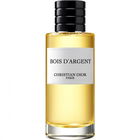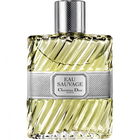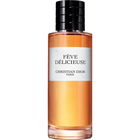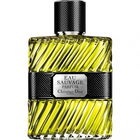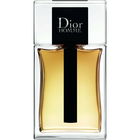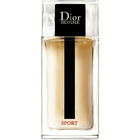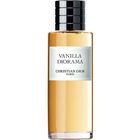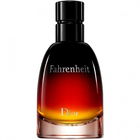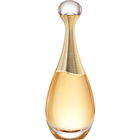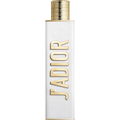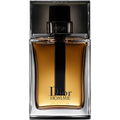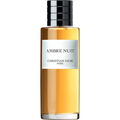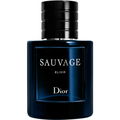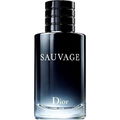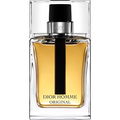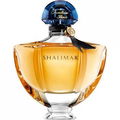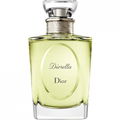06/19/2014

jtd
484 Reviews

jtd
Helpful Review
6
elusive
2013–I’ve seen some discussions online about the merits and pathologies of vintage perfume collecting. I’m live-and-let-live on this one. If it feels good, do it. But how far will you go for vintage? Me, not far. Of course my consolation prize is all of contemporary perfumery, so I’m not panicking.
But sometimes you can’t say no, yes? I’ve come across an old/new bottle of Dioressence edt from the ‘90s-‘00s. Dioressence the Tease, the Trap. Purported to have made the progression from old school, animalic grande dame to complete rubbish. To believe the stories, the vintage is the Grail, and the later reformulations weren’t worth pissing on.
So what vintage had I found? Fuck if I know, but it’s interesting. It’s not the monster that I suspect the original formulation was. But is it trash? Not at all. It’s a powdery, spicy oriental-chypre that’s built for human scale. Prim and upright but also tart and musky. More than a bit sweaty, actually. Dioressence has that come-hither yet stand-offish quality that old-school powdery perfumes conveyed so well.
2016— I’ve just found a wrapped and sealed bottle of pre-1980 Dioressence eau de toilette. This is the original version, composed by Guy Robert. It existed in its original formulation from 1969 to 1979 when it was reformulated by Max Gavarry. The bottle I found in 2013 was Gavarry’s.
Gavarry’s reformulation resembles the Robert original in that are both powdery, woody-floral chyprientals in a perfume-genre multi-culti sort of way. Gavarry’s started with a tart, funk-and-powder dynamic and spiciness in lieu of the animalic quality of the original but the drydown failed to keep up. It was tame in comparison to raspy balsamic drydowns found in other ‘70s-style oriental/chypre hybrids like Rochas Mystère and Lancome Magie Noire (both 1978) and Lancome’s Sikkim (1971.) Though both models of Dioressence cover a lot of the same territory, the evolution of the Robert version favors the classic oakmoss/amber drydown of a chypre and therefore seems more coherent. Its path is more logical than Gavarry’s which has its finger in a few too many pies.
From the perspective of 2016 both versions seem dated, but in 1979 I imagine the ‘new model’ read as more contemporary than the original Dioressence. As animal-sourced materials were fell out of favor, rich, spicy notes were used to give perfumes depth and richness. The Gavarry reboot fits in with the Cinnabar/Opium/Ispahan spiced-eggnog perfumes of the late ’70s. The original Dioressence was based at least to some extent on Miss Dior, a floral-animalic chypre from 1947, and would have seemed unstylish and outdated by 1979. Gavarry’s version made sense for its time, but from the angle of 2016, the original has the glamour of the coveted mid-century chypres. The Gavarry is like a ‘70s movie sequel by comparison. Less authenticky.
Dior continued to change Dioressence over the years, the name being the only continuity to the original. Quite unfortunately, Dioressence’s lasting contribution of perfume history is that it started Dior’s trend of continual, unacknowledged reformulation. Look no further than the bottomless pit of Dior Homme and Miss Dior Chérie reformulations. Actually, look further. The unambitious reformulations of Dior’s classics like Diorissimo, Diorling and Diorama—‘Les Créatures de Monsieur Dior’ I believe they’re called—are the logical and regrettable outcome of the repeated tinkering with Dioressence over the years.
But sometimes you can’t say no, yes? I’ve come across an old/new bottle of Dioressence edt from the ‘90s-‘00s. Dioressence the Tease, the Trap. Purported to have made the progression from old school, animalic grande dame to complete rubbish. To believe the stories, the vintage is the Grail, and the later reformulations weren’t worth pissing on.
So what vintage had I found? Fuck if I know, but it’s interesting. It’s not the monster that I suspect the original formulation was. But is it trash? Not at all. It’s a powdery, spicy oriental-chypre that’s built for human scale. Prim and upright but also tart and musky. More than a bit sweaty, actually. Dioressence has that come-hither yet stand-offish quality that old-school powdery perfumes conveyed so well.
2016— I’ve just found a wrapped and sealed bottle of pre-1980 Dioressence eau de toilette. This is the original version, composed by Guy Robert. It existed in its original formulation from 1969 to 1979 when it was reformulated by Max Gavarry. The bottle I found in 2013 was Gavarry’s.
Gavarry’s reformulation resembles the Robert original in that are both powdery, woody-floral chyprientals in a perfume-genre multi-culti sort of way. Gavarry’s started with a tart, funk-and-powder dynamic and spiciness in lieu of the animalic quality of the original but the drydown failed to keep up. It was tame in comparison to raspy balsamic drydowns found in other ‘70s-style oriental/chypre hybrids like Rochas Mystère and Lancome Magie Noire (both 1978) and Lancome’s Sikkim (1971.) Though both models of Dioressence cover a lot of the same territory, the evolution of the Robert version favors the classic oakmoss/amber drydown of a chypre and therefore seems more coherent. Its path is more logical than Gavarry’s which has its finger in a few too many pies.
From the perspective of 2016 both versions seem dated, but in 1979 I imagine the ‘new model’ read as more contemporary than the original Dioressence. As animal-sourced materials were fell out of favor, rich, spicy notes were used to give perfumes depth and richness. The Gavarry reboot fits in with the Cinnabar/Opium/Ispahan spiced-eggnog perfumes of the late ’70s. The original Dioressence was based at least to some extent on Miss Dior, a floral-animalic chypre from 1947, and would have seemed unstylish and outdated by 1979. Gavarry’s version made sense for its time, but from the angle of 2016, the original has the glamour of the coveted mid-century chypres. The Gavarry is like a ‘70s movie sequel by comparison. Less authenticky.
Dior continued to change Dioressence over the years, the name being the only continuity to the original. Quite unfortunately, Dioressence’s lasting contribution of perfume history is that it started Dior’s trend of continual, unacknowledged reformulation. Look no further than the bottomless pit of Dior Homme and Miss Dior Chérie reformulations. Actually, look further. The unambitious reformulations of Dior’s classics like Diorissimo, Diorling and Diorama—‘Les Créatures de Monsieur Dior’ I believe they’re called—are the logical and regrettable outcome of the repeated tinkering with Dioressence over the years.






 Top Notes
Top Notes  Aldehydes
Aldehydes Green notes
Green notes Bergamot
Bergamot Fruity notes
Fruity notes Orange
Orange Heart Notes
Heart Notes  Carnation
Carnation Rose
Rose Cinnamon
Cinnamon Geranium
Geranium Jasmine
Jasmine Orris root
Orris root Ylang-ylang
Ylang-ylang Tuberose
Tuberose Violet
Violet Base Notes
Base Notes  Oakmoss
Oakmoss Styrax
Styrax Patchouli
Patchouli Vetiver
Vetiver Benzoin
Benzoin Musk
Musk Vanilla
Vanilla













 BeHumble
BeHumble Seta
Seta Floyd
Floyd Theris
Theris Axiomatic
Axiomatic Pollita
Pollita FrauKirsche
FrauKirsche Ttfortwo
Ttfortwo Stulle
Stulle Azura
Azura